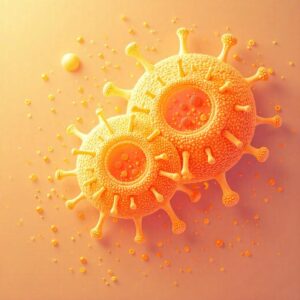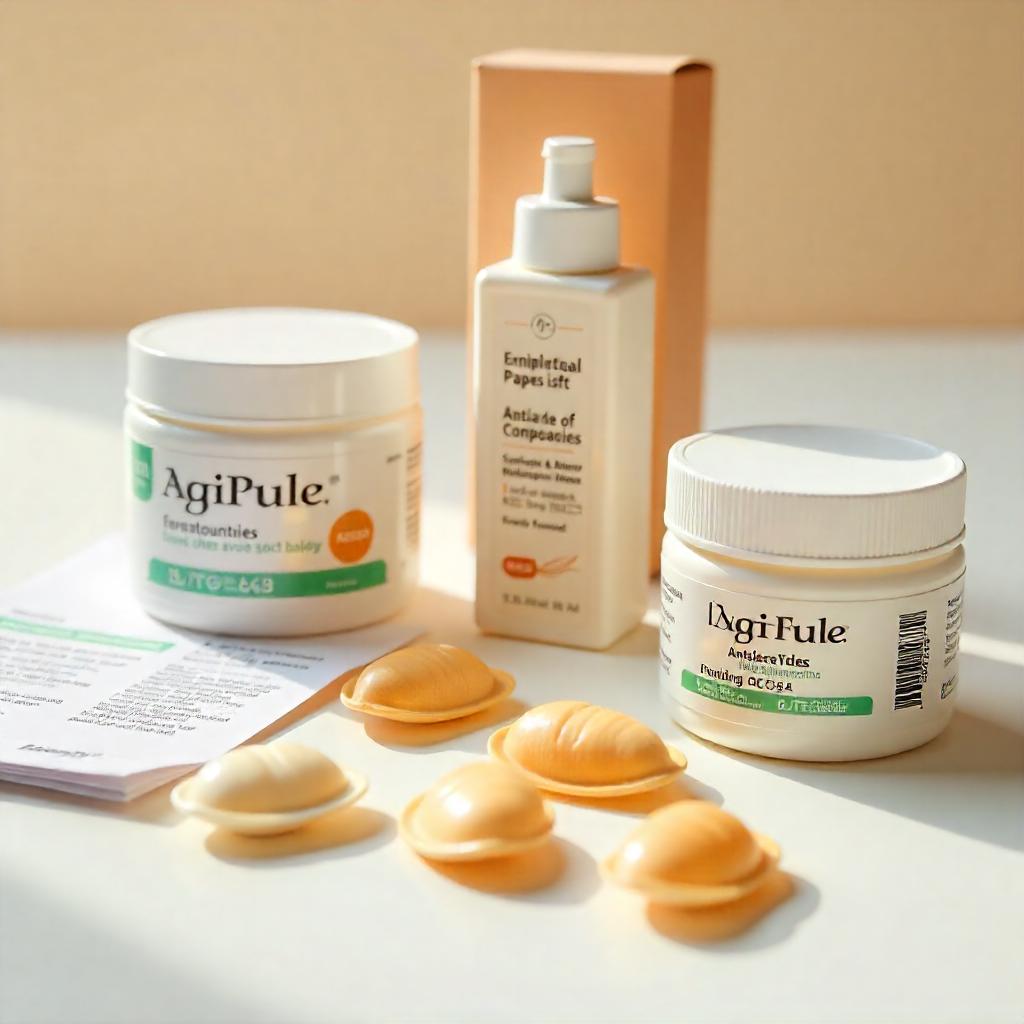Introduction
Yeast infections are a widespread health issue that affects millions of individuals globally. The primary cause of these infections is an overgrowth of the fungus Candida, particularly Candida albicans. While yeast infections can occur in various areas of the body, this comprehensive guide focuses on yeast infection treatment, specifically for vaginal yeast infections, which are particularly common among women. By the end of this article, you will have a thorough understanding of the symptoms, causes, types, and effective treatment options available for yeast infections.

Understanding Yeast Infections
What is a Yeast Infection?
A yeast infection occurs when there is an overgrowth of yeast, particularly Candida, in a specific area of the body. Normally, yeast exists in small amounts within the body, especially in the mouth, gut, and vaginal area. Under certain conditions, however, this yeast can multiply uncontrollably, leading to an infection. Understanding yeast infection treatment begins with recognizing the nature of these infections.
Symptoms of Yeast Infections
Identifying the symptoms of a yeast infection is crucial for timely yeast infection treatment. Common symptoms include:
- Itching and Irritation: Severe itching and irritation in the affected area are hallmark signs of a yeast infection.
- Discharge: A thick, white, odorless discharge resembling cottage cheese is typical of a vaginal yeast infection.
- Redness and Swelling: The vulva may appear red and swollen due to inflammation.
- Pain: Discomfort during intercourse or while urinating can occur, making daily activities challenging.
Causes of Yeast Infections
Several factors can contribute to the development of a yeast infection, highlighting the importance of understanding yeast infection treatment. These factors include:
- Antibiotics: These medications can disrupt the normal balance of bacteria in the body, allowing yeast to proliferate. Antibiotics kill off beneficial bacteria that normally keep yeast levels in check.
- Hormonal Changes: Fluctuations in hormone levels during menstruation, pregnancy, or menopause can increase the risk of yeast infections. For instance, increased estrogen levels can lead to a higher risk of infection.
- Diabetes: Individuals with uncontrolled diabetes may have elevated sugar levels in their blood and urine, which can promote yeast growth.
- Weakened Immune System: Conditions that weaken the immune system, such as HIV/AIDS or certain medications (e.g., corticosteroids), can lead to an increased risk of infections.
- Uncontrolled Moisture: Wearing tight clothing or wet swimwear for extended periods can create an environment conducive to yeast growth. Hot and humid weather can also exacerbate the situation.
Types of Yeast Infections
- Vaginal Yeast Infections: The most common type, primarily affecting women. Approximately 75% of women will experience at least one vaginal yeast infection in their lifetime.
- Oral Thrush: A yeast infection that affects the mouth, characterized by white patches on the tongue and inner cheeks. It can also occur in infants and individuals with weakened immune systems.
- Skin Yeast Infections: These occur in warm, moist areas of the body, such as underarms, groin, and between fingers and toes. Symptoms can include redness, itching, and rash.
- Invasive Candidiasis: A more severe form of yeast infection that occurs when Candida enters the bloodstream, potentially affecting organs. It is commonly seen in hospitalized patients or those with compromised immune systems.

Diagnosis of Yeast Infections
When to Seek Professional Help
If you suspect you have a yeast infection, it is essential to consult a healthcare provider, especially if:
- This is your first yeast infection.
- You experience recurrent yeast infections (four or more in a year).
- Symptoms are severe or do not improve with over-the-counter treatments.
- You have other underlying health conditions, such as diabetes or a weakened immune system.
Diagnostic Tests
A healthcare provider may perform several tests to diagnose a yeast infection and determine the most effective yeast infection treatment, including:
- Physical Examination: A thorough examination of the affected area to assess symptoms.
- Swab Test: A sample may be taken from the affected area for laboratory analysis to confirm the presence of Candida.
- pH Testing: The vaginal pH may be tested; a pH greater than 4.5 can indicate an infection, although it is not definitive for yeast infections.
Yeast Infection Treatment Options
1. Antifungal Medications
Antifungal medications are the cornerstone of yeast infection treatment. They can be classified into over-the-counter (OTC) treatments and prescription medications.
Over-the-Counter Treatments
- Monistat (Miconazole): Available in various forms, including creams and suppositories, Monistat is effective for treating vaginal yeast infections. Most OTC treatments are available in one, three, or seven-day regimens, with varying concentrations.
- Canesten (Clotrimazole): Another topical antifungal available in creams and suppositories, Canesten is highly effective in treating yeast infections.
- Terconazole: A prescription antifungal available as a cream or suppository, it is often used for more severe infections.
Prescription Medications
- Fluconazole (Diflucan): An oral antifungal medication commonly prescribed for recurrent yeast infections. It is usually taken as a single dose but may be prescribed for longer durations in chronic cases.
- Itraconazole: Another oral antifungal that may be prescribed for severe or recurrent infections.
- Nystatin: Often used for oral thrush, Nystatin is available as a liquid or tablet and works by binding to the fungal cell membrane.

2. Home Remedies
While antifungal medications are effective, some individuals may prefer natural remedies as part of their yeast infection treatment. Here are some options:
- Probiotics: Consuming probiotic-rich foods like yogurt, kefir, and sauerkraut can help restore the natural balance of bacteria and yeast in the body. Probiotics contain beneficial bacteria that can inhibit yeast growth.
- Coconut Oil: Known for its antifungal properties, applying coconut oil to the affected area may help alleviate symptoms. It can be used topically or consumed as part of a healthy diet.
- Apple Cider Vinegar: Diluted in water, it can be used as a wash to help restore pH balance. Some individuals also consume it mixed with water for overall health benefits.
- Garlic: Garlic has natural antifungal properties. Some people consume raw garlic or take garlic supplements to help combat yeast infections.
- Tea Tree Oil: This essential oil has antifungal properties and can be diluted and applied topically to the affected area. However, it should be used with caution and never applied undiluted.
3. Lifestyle Changes
In addition to treatments, certain lifestyle changes can help prevent and manage yeast infections:
- Wear Breathable Fabrics: Opt for cotton underwear and loose-fitting clothing to reduce moisture buildup. Avoiding synthetic fabrics can also help.
- Maintain Good Hygiene: Regularly wash the affected area with mild soap and water. Avoid douching, as it can disrupt the natural balance of bacteria.
- Limit Sugar Intake: Reducing sugar consumption can help minimize yeast growth, as yeast thrives on sugar.
- Stay Hydrated: Drinking plenty of water helps maintain overall health and can support the immune system in fighting infections.
- Practice Safe Sex: Use protection to minimize the risk of infections and maintain a healthy sexual lifestyle.

Preventing Yeast Infections
Key Prevention Tips
- Avoid Antibiotics When Possible: Only take antibiotics when prescribed by a healthcare professional. If you must take them, consider using probiotics concurrently to help restore the natural flora.
- Manage Diabetes: Keeping blood sugar levels controlled can help prevent yeast infections in individuals with diabetes.
- Practice Good Hygiene: Maintain proper hygiene by washing the genital area daily and drying thoroughly after bathing.
- Avoid Irritants: Steer clear of scented soaps, douches, and feminine hygiene sprays that can irritate the vaginal area.
- Change Out of Wet Clothes Promptly: If you swim or sweat, change out of wet clothes as soon as possible to reduce moisture.
- Eat a Balanced Diet: A healthy diet rich in whole foods, fruits, and vegetables can help support the immune system.
FAQs About Yeast Infection Treatment
Q1: How long does it take for yeast infection treatment to work?
A: Most over-the-counter treatments provide relief within a few days, while prescription medications may take up to a week. However, if symptoms persist after treatment, consult a healthcare provider.
Q2: Can I treat a yeast infection at home?
A: Yes, several home remedies can help alleviate symptoms, but it’s essential to consult a healthcare provider for persistent or severe cases.
Q3: Are yeast infections contagious?
A: Yeast infections are not considered sexually transmitted infections and are generally not contagious. However, sexual activity can sometimes trigger an infection in a partner.
Q4: When should I see a doctor for a yeast infection?
A: If you experience recurrent yeast infections, severe symptoms, or if your symptoms do not improve with treatment, consult a healthcare professional.
Q5: Can men get yeast infections?
A: Yes, men can develop yeast infections, typically characterized by redness, itching, and irritation on the penis. It is often linked to sexual activity with a partner who has a yeast infection.
Q6: Can I have a yeast infection without discharge?
A: Yes, it is possible to have a yeast infection without the typical thick, white discharge. Symptoms may vary from person to person.
Q7: What should I avoid during a yeast infection?
A: Avoid using scented products, douching, and tight clothing. Additionally, limit sugar intake, as it can promote yeast growth.
Conclusion
Understanding yeast infection treatment is essential for effectively managing and preventing these common infections. By recognizing the symptoms, causes, and available treatment options, individuals can take proactive steps to maintain their health. Whether you choose antifungal medications, home remedies, or lifestyle changes, addressing the underlying factors contributing to the infection is critical for successful management.
For more information, visit Info Vistaa to explore additional health topics and resources.
References
- Centers for Disease Control and Prevention (CDC) – Yeast Infections
- Mayo Clinic – Yeast infection (vaginal) – Symptoms and causes
- American Academy of Family Physicians – Vaginal Yeast Infections
- National Institute of Allergy and Infectious Diseases – Candidiasis

